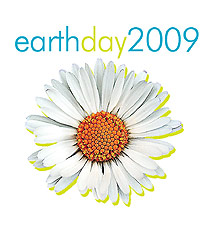New York State of Green

Despite widespread criticism of the state budget, it may be one of the most environmentally friendly ever
While everybody else in New York state is busy blasting the recently passed budget, some environmental groups are quietly celebrating the number of measures included in the budget agreement that will increase the sustainability of the state as well as protect eco- friendly programs already in place.
“We were really hopeful,” says Jessica Ottney of the Nature Conservancy, a global organization whose Eastern New York chapter is located in Albany on New Karner Road.
The 2009-2010 enacted budget allocates $222 million to the Environmental Protection Fund (EPF) of the Department of Environmental Conservation, which enables the purchase of land for conservation, as well as funding for chemical and pollution control, and the protection of wildlife.
The $222 million is $17 million more than Gov. David Paterson had originally proposed, and environmental groups are thankful for the victory.
“The Nature Conservancy is thankful that in these difficult economic times, environmental funding was not disproportionately reduced,” says Kathy Moser, deputy state director for the Nature Conservancy in New York.
The Nature Conservancy works together with about 150 other conservation groups as part of an organization called Friends of New York, which strives for increases or restorations in the budget each year.
“We talked to many many lawmakers, almost all of them, and really made the case that the cuts that were proposed would be very detrimental to these programs,” Ottney says. “Although it is less than it has been in past years, it was really fantastic that we got a $17 million restoration. This money supports things from parks to water conservation—it runs the gamut. “
The budget secured funding for the EPF through a real-estate transfer tax, a fee paid for real-estate transactions. “This is not a new fee, that is the traditional source of income for environmental programs in New York state,” Ottney says.
Albert E. Caccese, executive director of Audubon New York, agrees: “In both good and bad economic times, the real-estate transfer tax has provided a strong and sustainable source of funding for the EPF to support critically important projects for restoring our water, land and air resources and keeping New Yorkers working.”
Wildlife-protection initiatives were particularly vulnerable to the proposed budget cuts this year.
“For zoos, botanical gardens and aquaria, they were slashed to zeroed out,” Ottney says. “That would have been a very significant loss. Those funds not only go to zoos but actually support programs that care for living animals and plants. The funds will make sure that those institutions are available.”
The EPF, which has been providing funds for environmental conservation for more than 15 years, also funds environmental education programs and outdoor recreation.
“The vital support that EPF funds provide for living museums in every corner of New York state will allow us to continue educating millions of New Yorkers through innovative ecological literacy programs,” says Lois Carswell, chairman of the Coalition of Living Museums, “and provide economic stability to local communities.”
Another aspect of the budget that has conservation groups excited is the expansion of the New York bottle bill. Dubbed the “Bigger Better Bottle Bill” by its advocates, the bill marks the first major overhaul of the bill since its creation in 1982. Under the new law, bottled watter—which makes up nearly a quarter of the bottled beverages sold in the state—will be included in the state’s nickel deposit program, and beverage companies will be required to return 80 percent of the unclaimed bottle and can deposits to the state.
According to conservationists, not only will this program increase recycling and reduce litter, but it will also bring in more than $100 million in revenue to close the gap in the state budget.
“This was really the year to do it,” Ottney says. “With the revenue needs of New York and recycling being in the forefront, those issues really lined up this year to make it happen.”
Organizations also point out the other revenue benefits of investing in environmental conservation. Solid-waste programs help support an industry with $1.3 billion in revenue and 30,000 jobs, while wildlife watchers in the state contributed an estimated $1.6 billion plus an additional $250 million in sales tax revenue to the state economy in 2006.
Ottney also points out specific lawmakers that were instrumental in the formation of this “green” budget.
“Sen. Antoine Thompson from Buffalo and Assemblyman Robert Sweeney from Long Island were amazing champions for the environment this year,” Ottney says. “They should really be commended for this achievement.”
Link to original article
